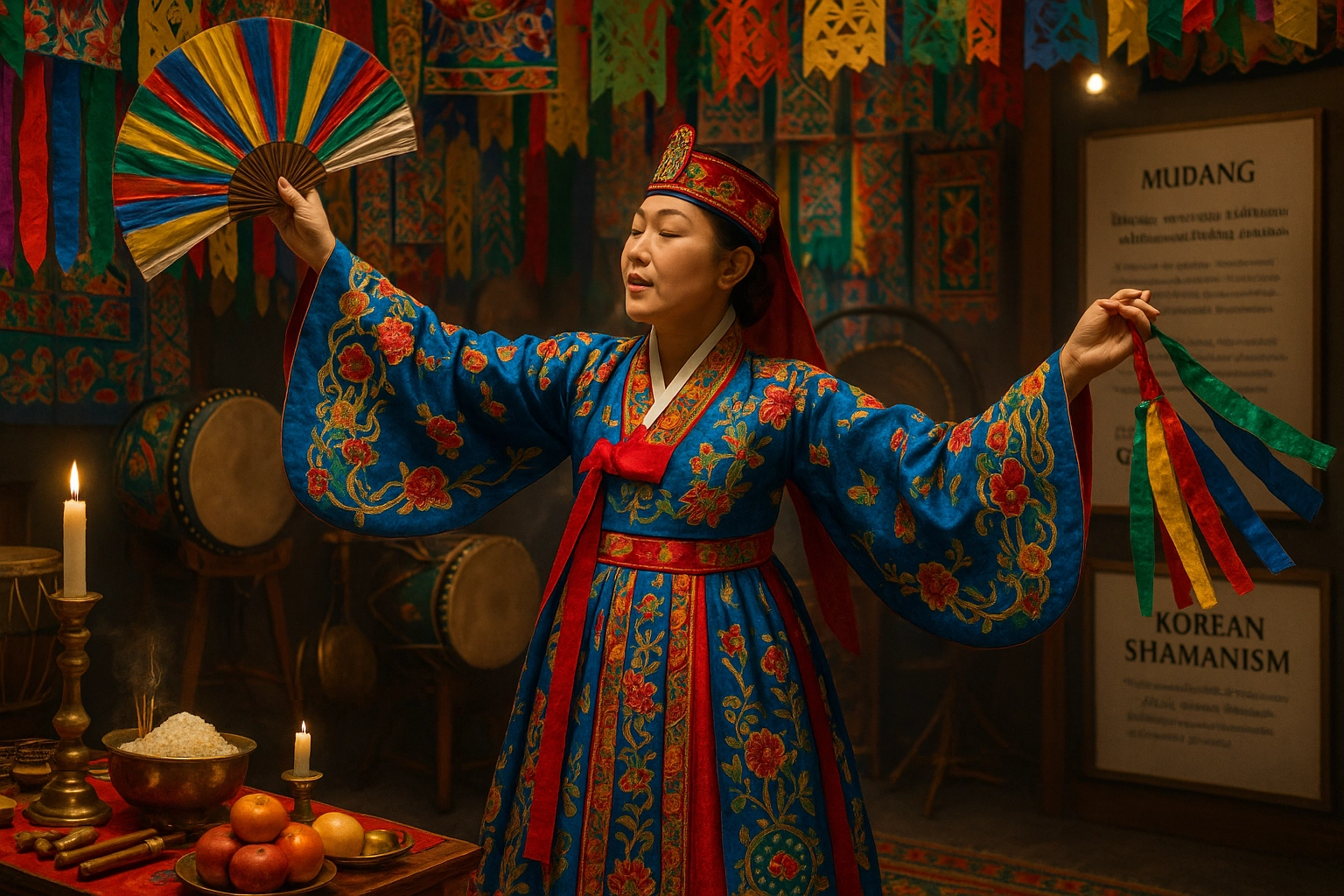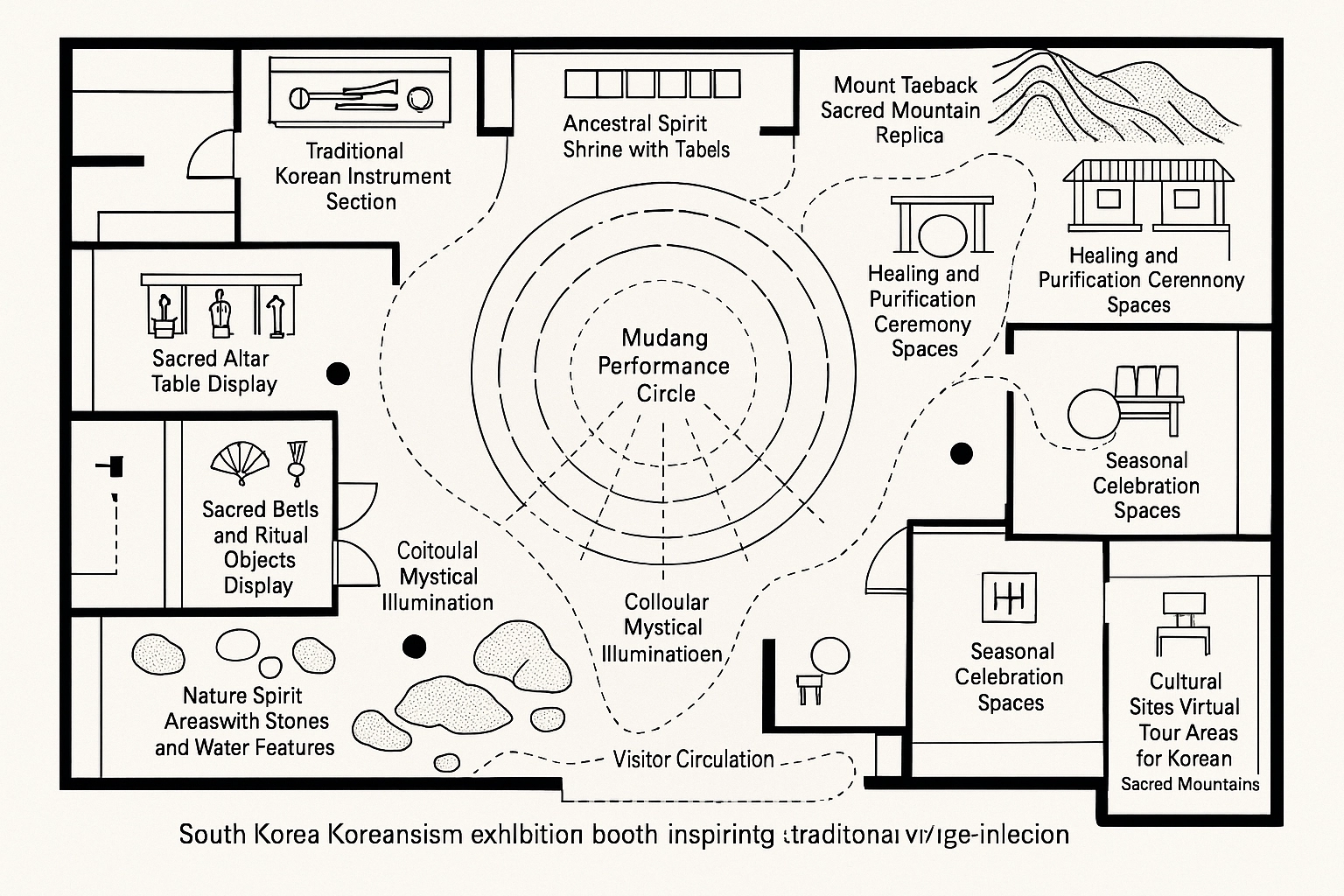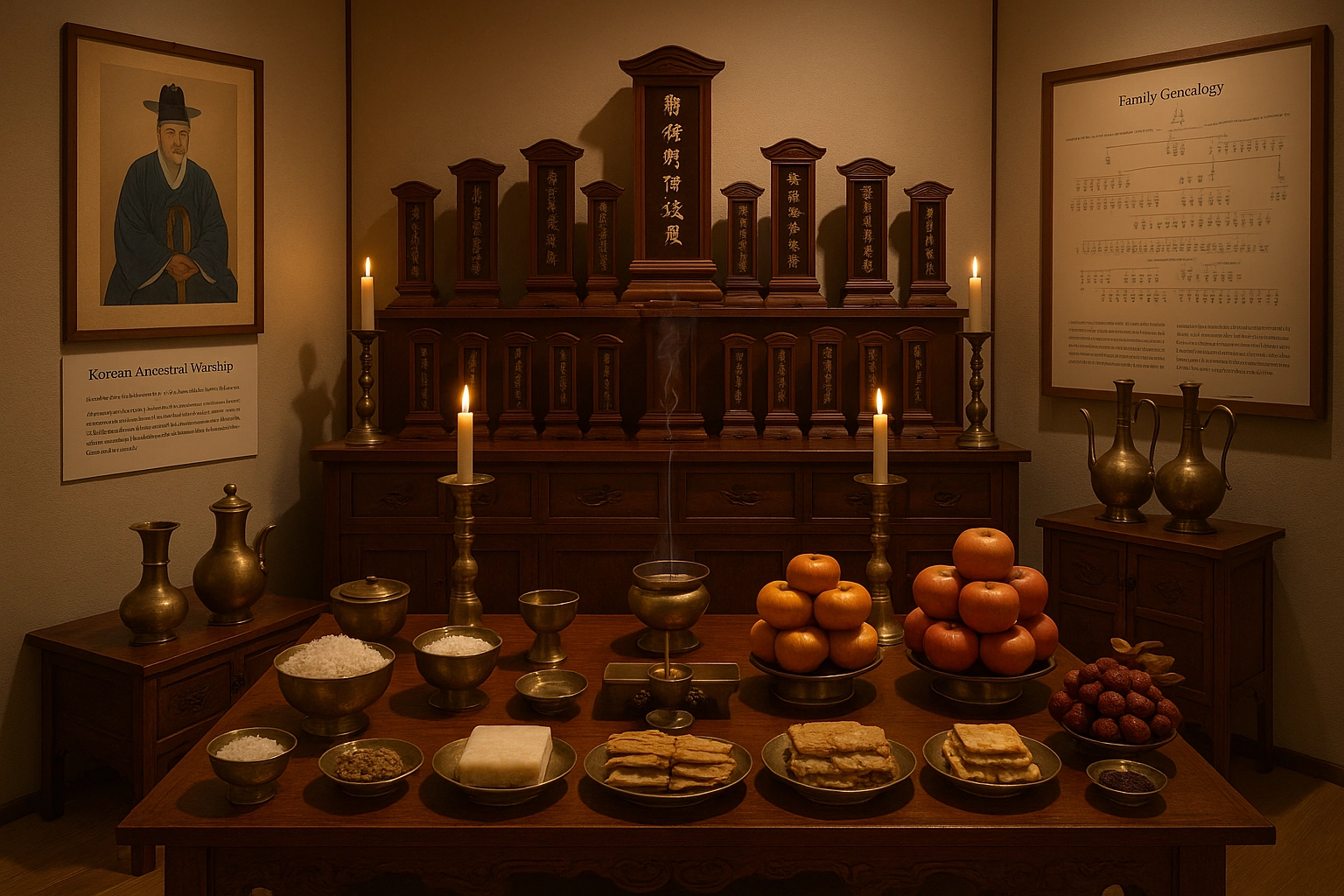South Korea: Korean Shamanism Exhibition
Discover the living bridge between spirits, ancestors, and people through Korean Shamanism's ancient wisdom and enduring traditions
Exhibition Layout & Experience

Exhibition Floor Plan
Interactive layout showing shamanic ritual spaces, ancestral shrines, and traditional ceremony areas

Main Exhibition Hall
Featuring mudang costumes, sacred instruments, and immersive shamanic ceremony displays

Sacred Ritual Space
Traditional gut ceremony setup with five-color robes and ancestral tablets symbolizing spiritual connection
Historical Origins
Korean Shamanism, known as Muism (무속), is one of the oldest spiritual traditions on the Korean peninsula, with roots extending back over 3,000 years. Emerging before Buddhism and Confucianism, it has continuously evolved alongside Korea's dynastic, social, and political changes.
Development & Formation
Originally centered on natural forces and ancestral reverence among tribal societies, Korean Shamanism gradually absorbed influences from Buddhism, Taoism, and indigenous folk beliefs. The role of the mudang (female shaman) became central as both spiritual intermediary and community healer.
Key Figures & Exemplars
Mudang (무당)
Charismatic female shamans serving as primary spiritual mediators, healers, and ritual leaders.
Baksoo (박수)
Male shamans, often focusing on village or national rituals.
Sansin & Ancestral Elders
Venerated mountain spirits and revered ancestors guiding spiritual tradition.
Core Concepts & Beliefs
Han (한)
Deep collective sorrow or trauma healed through shamanic ritual.
Jeong (정)
Profound emotional connection binding families and communities.
Nunchi (눈치)
Spiritual sensitivity and awareness of energies and harmony.
Sinbyeong (신병)
Spiritual awakening signaling a calling to become a shaman.
Fundamental Principles
Reciprocity and Respect
Mutual obligations between humans, spirits, and ancestors.
Purification
Ritual cleansing to restore balance and harmony.
Transformation
Overcoming hardship through spiritual intervention and ceremony.
Harmony with Nature
Deep reverence for mountains, rivers, and land as living beings.
Sacred Symbols
Five-Color Robes (Obangsaek)
Blue, red, yellow, white, and green representing heaven, earth, and harmony.
Fans, Drums, and Bells
Sacred instruments used to summon and direct spiritual energies.
Ancestral Tablets (Juju)
Wooden tablets inscribed with ancestor names for veneration.
Totem Poles (Jangseung)
Village guardians marking sacred and protected spaces.
Major Rituals & Ceremonies
Gut (굿)
Large-scale shamanic ceremonies for healing, protection, and ancestral rites.
Jesa (제사)
Ancestral memorial ceremonies connecting families with lineage spirits.
Naerim Gut
Ritual for initiating a new shaman after the spiritual calling.
Dodang Gut
Village-wide rituals seeking protection and blessings for the community.
Global Influence & Cultural Impact
Living Tradition
Korean Shamanism endures as a living tradition, not only within Korea but in diaspora communities around the world, inspiring contemporary art, theater, and music.
Cultural Heritage
Despite historic persecution, it persisted at the heart of folk life, shaping family rituals, agricultural calendars, and community festivals throughout Korean history.
National Recognition
Today recognized as an Intangible Cultural Heritage and protected in national memory, serving as one of Korea's most unifying cultural phenomena.
Literary & Spiritual Texts
Oral Tradition
Transmitted through song, story, and performance across generations
Mythic Songs (Muga)
Sacred chants and ceremonial instructions preserved by scholars
Ritual Scripts
Collected ceremonial texts ensuring preservation of ancient narratives
Sacred Places & Monuments
Mount Taebaek (태백산)
Sacred mountain for national rituals and legendary home of Dangun
Jongmyo Shrine (종묘)
UNESCO World Heritage site for royal ancestral rites in Seoul
Village Shrines
Local sites for regular community gut ceremonies and sacred groves
Family Ancestral Shrines
Found in Korean homes and villages, focal point for jesa rituals
Enduring Wisdom
"Through the dance of the mudang, the wounds of the people become the healing of the soul, and the voice of the ancestors returns on the wind."— Traditional saying from Korean shamanic communities